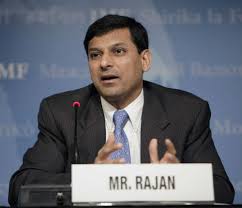
Allaying concerns over inadequate capitalisation of banks reeling under the stressed assets, State Bank of India (SBI) Chairperson Ms Arundhati Bhattacharya said her bank and several others in the public sector would divest non-core assets for meeting the funding requirement as per the Basel III norms.
Delivering the ASSOCHAM Foundation Day Lecture in New Delhi, Ms Bhattacharya said let people rest assured that the banks would be capitalised both by the government as also through generation of internal resources by sale of non-core assets.
She said as part of the ‘ Indradhanush ‘ package of Rs 1,80,000 crore, the government was to capitalise the PSU banks to the extent of Rs 70,000 crore while the balance of Rs 1,10,000 crore was to be raised by the individual banks through different means. At the SBI, the banks has indentified certain non-core asset and some unlisted entities which would be used for raising such resources for measuring up to Basel III norms.
The SBI chief also allayed apprehensions that the journey towards the global banking norms would raise the cost of borrowing.
Answering a question from an ASSOCHAM member over the kind of competition which may ensue with the entry of payment gateways, Ms Bhattacharya asserted, “we have no intention of vacating that space. We will (rather) leverage it to the hilt”. She said the SBI with a legacy of 209 years has a kind of trust with the small and retail customers which the new payment gateways would not have. The country’s largest bank is opening as many as 70,000 accounts per day through 54,000 Customer Service Points (CSPs) outside the bank branches, operated through channels like the fertiliser dealer or grocery stores.
These CSPs are now being equipped to sell banking, insurance and pension products by way of massive 25,000 training sessions.
Sharing a multi-pronged strategy to deal with the problem of stressed assets and non-performing assets, the SBI chief informed the ASSOCHAM members that her bank would, in about a year, would launch a platform along with the SIDBI and NSE for discounting of bills by traders. The initiative would not only help the traders but also help the bank to reduce the NPAs.
She put the blame for the NPAs on all the stakeholders- promoters, government, lenders and even the regulators. Ms Bhattacharya said promoters were bidding aggressively riding on the back of good times around 2007-08 and some of them were diverting funds out of the well-run units hoping the money flow would continue forever. On their part, the banks extended loans for long duration, as much as 30 years, while hoping the funds would be recovered in 10 years or so. The regulator is to blame for allowing such a dispensation while the government was to take the blame for policy uncertainty like cancellation of telecom licences.
On China, Ms Bhattacharya said the communist country has abundant reserves to capitalise the banks with a swift response…..so “China would not have a hard landing”. The problems arose for China as after a scorching pace of growth the county is faced with negative inflows as it grapples with shifting from investment -led growth to consumption led pattern of expansion.
As for the government’s financial inclusion programme like the PM Jan Dhan Yojna, she said with the help of unique programme like Aadhar, which is the world’s largest biometric programme, the banks would have capture the transaction history of the beneficiaries and then accordingly design finance products for them .
In his address, ASSOCHAM President Mr Sunil Kanoria said, the growing level of NPAs in the Indian banking system is an area of concern. Gross NPAs of commercial banks stood at 5.1% in September 2015, while the restructured standard advances as a percentage of gross advances stood at 6.2% during the same period. The figures are even higher for the public sector banks (PSBs) which account for roughly 70% Indian banks’ assets. Initiatives like the 5/25 scheme and strategic debt restructuring to tackle stressed assets and especially to help companies in infrastructure and core sector to tide over bad times.
Thus, despite the growing NPAs, the scenario is not all that alarming. In fact, about 58% of the impaired assets are due to stalled projects, thus that portion is very much recoverable. In addition, our banks remain well capitalized. RBI has kept the risk-weighted capital adequacy ratio for our banks at 9% and aims to take this figure up to 10.5% by 2019, whereas the figure as per Basel II standard is 8%. Not a single PSB has capital adequacy ratio below 9%, in fact except for 4 PSBs, all have capital adequacy ratio higher than 10.5%. Net, net, our banks are resilient and still enjoy space for maneuverability, and with corrective action the NPA problem can be mitigated. And now with a new Bankruptcy Code on the anvil, the banks will be better equipped to deal with stressed assets, said Mr. Kanoria.
During the last 2-3 years, use of technology has become integral to banking operations and technology is used for data analysis, understanding of credit needs of customers, customer interaction, etc and even helps banks to offer more focused products to customers. Thus, banking and technology are now inseparable.
This emerging technological landscape in the financial world according to me is the greatest opportunity and at the same time the biggest challenge. Players who will be able to successfully ride the technology curve will emerge winners, while those who will fail to do so will lose out. Some of the banks who have taken the lead in embracing technology are now being equated with ‘technology players with banking license’, added ASSOCHAM chief.
Other who also spoke during the conference were Mr. R N Dhoot, Past President ASSOCHAM and Mr. D S Rawat, Secretary General ASSOCHAM.







Leave a Reply
You must be logged in to post a comment.